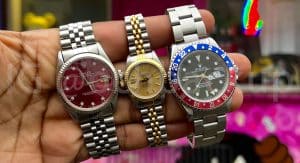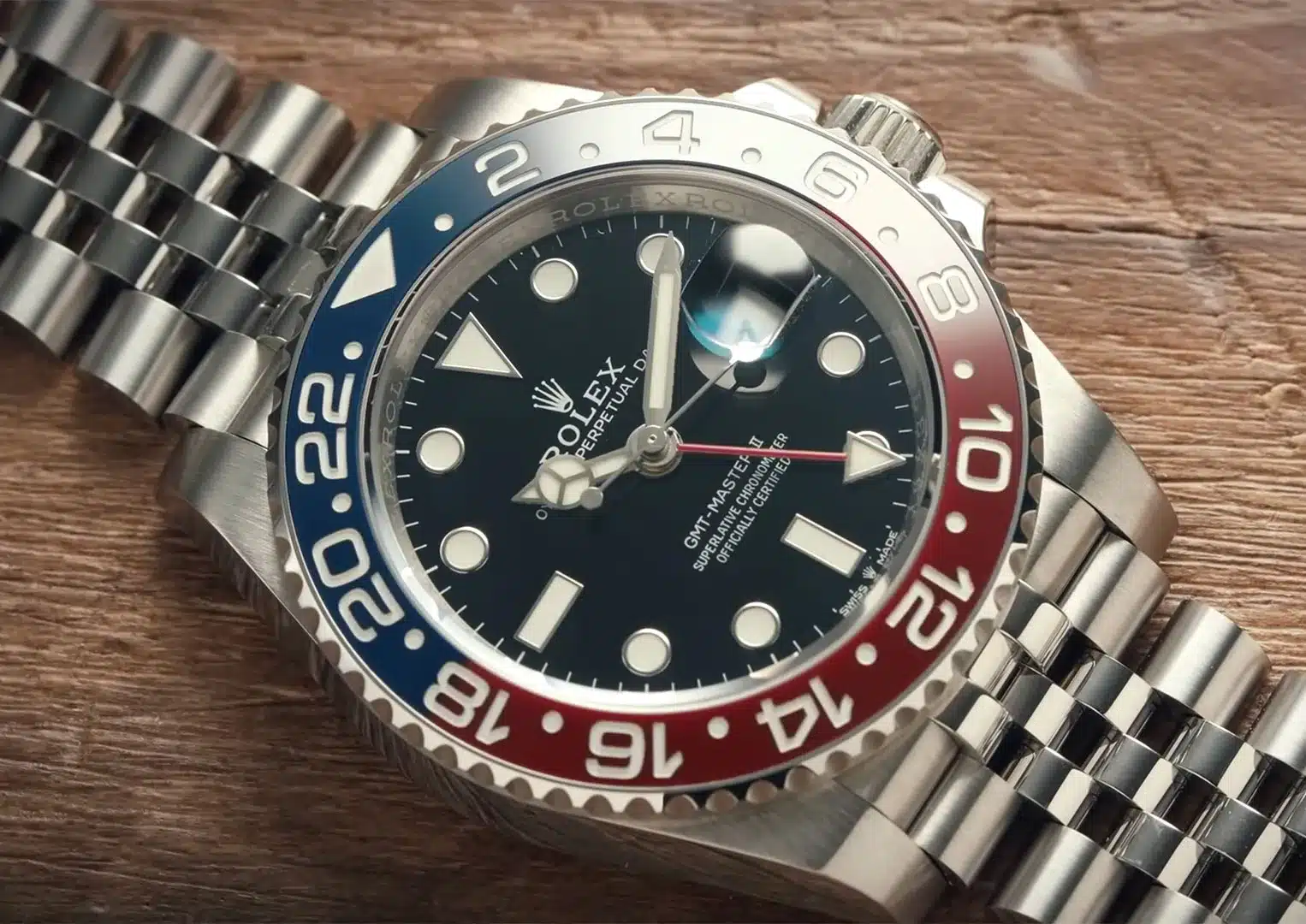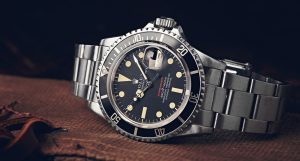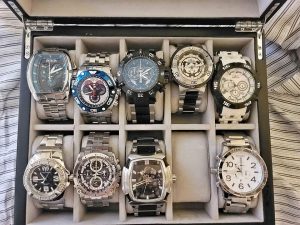
Feature: Here’s Why This Fake Rolex Is So Accurate
It’s no secret now that if you want to buy a hard-to-find Rolex stainless steel sports watch and you don’t want to spend more than £200, you can quite simply buy a fake. These superclone watches are accurate to the finest detail, at least, within the realms of any normal person’s expectations, and it begs the question: how can today’s fake watches be so accurate? Here are three reasons why.
Don’t Need To Spend Money On Marketing
If you’re going to make something, the first thing you’re going to need is money. Money to do research, buy materials, run machinery, pay wages—and money to let potential customers know your product even exists at all. The question often pops up when it comes to the manufacturers of fake watches: why don’t they simply make their own watch brand?
The honest answer is this: if they did, you probably wouldn’t know about it. Why? Marketing. The watch industry spends half a billion annually on marketing, with Rolex taking up a ten percent share of that. Whether it’s Formula 1, the tennis, golf, you name it—Rolex will be there, spending big. That’s going to be reflected in the price of the product, and is reciprocated by demand.

The watch industry spends half a billion annually on marketing
And what most people don’t realise is that it’s taken Rolex over a century to get to this point. Fifty or so years ago, Rolex was just an upcoming manufacturer of affordable watches for professionals that sat in the shadow of its much older and more accomplished competitors. Through innovation, clever thinking and a whole lot of luck, the Rolex we know today is one of gargantuan proportions.
So, if you didn’t have that much money and you wanted to make watches that were going to sell, which do you think is going to be more successful, making copies of an already established brand, or starting your own from scratch? If you can get away with the former, it’s certainly not going to be the latter. And if you get all the benefit without all the spend, what money you do have can be spent exclusively on the quality of the product.
Access To High-Tech Machining Equipment
Wanting to make a watch and being able to make a watch are not exactly the same thing, and if this were a decade or so ago, we wouldn’t be having this conversation at all. If it feels like there’s been a recent swell in the rise of fake watches, that’s because there has, and it’s all to do with the way technology has changed.
Perhaps you’ve heard of rapid prototyping, 3D printing, that sort of thing? These kinds of technologies give manufacturers the opportunity to produce low volume, high quality products, typically straight from a computer model. It’s getting so easy to do, that there are even affordable consumer kits that allow you to make pretty much whatever you like in your own home.
Granted, the equipment used to make fake watches is a fair bit better than that, but the principle is the same. Decades ago, rapid prototyping was hideously expensive, requiring enormous investment in tooling and setup to produce a limited run batch of product. Now, you can design something on a computer and pretty much hit print.

High-end tooling is becoming more and more affordable. Fakes, therefore, are incredibly accurate
And not only are the machines doing this work much cleverer, more accurate and even faster—they’re cheaper, too. And here’s where it gets crazy—the machines are so good now that they can be used to manufacture cloned versions of themselves. I’ve heard of 3D printing parts for your 3D printer, but this is off the scale.
The end result is that it is cheaper, faster and more accurate than ever to quite simply scan an original shape and duplicate it to a high level. You still don’t get that last few percent of hand-finished quality offered on the genuine, but for the average consumer, that difference is virtually invisible.
An International Network Of Quality Control
With low overheads and rapid production, the opportunity for problems to arise seems high, but even here the manufacturers of the fake watches have their backs covered. For Rolex to release a product, it must be finished, perfect, otherwise it will find itself dealing with an extremely detrimental backlash. When you’re making fake watches, you can, quite simply, let your customer act as quality control for you.
Replicating a watch to a high degree of accuracy is a never-ending game, with the manufacturer attempting to prevent it and the fakers trying to keep up. There are a lot of little details to contend with, right down to things like the shape of the luminous paint plots and the specific shade of colour the text is. In some cases, these differences will be down to the limitations of production—in others, they’re merely mistakes that slipped through the net.
With no reputation to stand by, however, that doesn’t really matter, because there’s an army of people all around the world ready to put those problems right. Let’s be real for a second; these high-priced fakes are not being purchased by people unawares—not direct from the manufacturer, at least—but by customers actively seeking a not-insubstantially pricey replica of their favourite watches.
It’s in the interest of those people that the watches they’re buying are as close to the original as possible, and so they collectively form a net that catches these mistakes. There are communities across the world dedicated not only to identifying these discrepancies, but rectifying them as well, spending even more money modifying their new purchases to the highest degree of accuracy—even sometimes fitting original parts as well.

Fakers use customer feedback to tweak and perfect their products
With that level of feedback, it’s no wonder that the fakes are getting closer and closer, and it doesn’t cost the manufacturers a penny. It’s a luxury no other industry gets to benefit from quite like this.
It’s easy to see how the manufacturers of these fake watches are able to build what they have for the money they’re asking, but it’s worth coming back to an earlier point to understand the implications. There’s clearly a capability to manufacturer a product to a certain level of quality, but to do so under the manufacturer’s own name with its own designs would most likely be entirely unprofitable.
The reason these watches are popular is because Rolex is so successful, because it’s a recognisable, aspirational, emotive brand. This intangible sense of desire for the five-pointed crown was not easily won and costs an absolute fortune to maintain, and so it raises the question on what there is to gain from purchasing a fake if not to give you a sense of pride in owning something special.
But the real losers are all of us. If these fake watch manufacturers chose to create such close replicas because wearing the Rolex brand, real or fake, means more than encouraging new watchmakers to emerge and grow, then we’re all missing out on the possibilities of what could have been. Imagine if those capabilities had been used to create something new and original instead.
- WhatsApp: +44 7907 893818
- Email: support@ochrone.life


